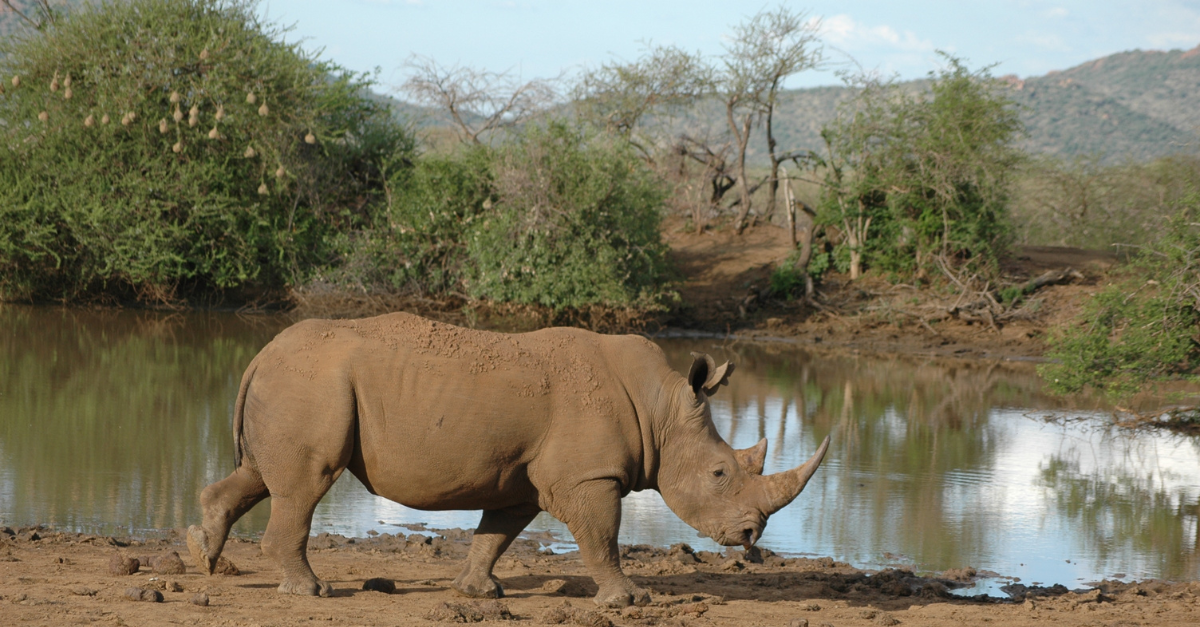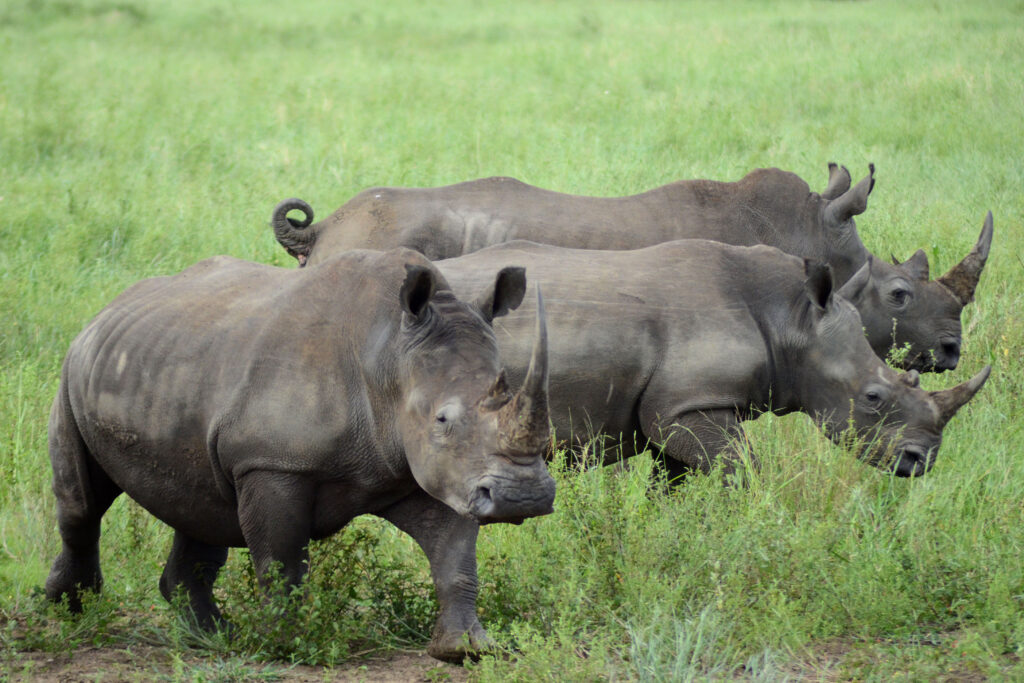Rhinos on the Move: The Challenges and Hope for Their Future

This blog was written by IRF partner, African Rhino Specialist Group
When you think of rhinos, you might imagine large, majestic creatures wandering through wild savannas. While that’s true, there’s much more going on behind the scenes to help keep these magnificent animals thriving. The African Rhino Specialist Group (AfRSG) is working hard to make sure rhinos have a future, but it’s not easy. Let’s explore what’s happening and how experts are tackling the challenges, all while finding some reasons to remain hopeful.
Moving Rhinos Around: A Complicated Puzzle
Rhino conservation isn’t just about protecting them from poachers. It’s also about where these rhinos live. Sometimes, to protect them, rhinos need to be moved to new places where they can thrive. This is called “translocation”. Imagine trying to move a couple, or a couple hundred, 2,000 kg animals to a new home—that’s a mammoth task!
In most cases, rhinos are moved to new sites within their historical range—areas where they used to roam naturally. For example, conservationists are thinking about moving black rhinos back to places like the Zambezi Valley in Zimbabwe. However, things get trickier when rhinos are moved outside their natural range.
One particularly big project is the “Rhino Rewild” initiative by African Parks, which involves reintroducing about 2,000 white rhinos into the wild from a facility in South Africa. These kinds of moves require a lot of planning to ensure that the new environments will suit the rhinos and won’t harm the ecological dynamics in these areas. It is also crucial to ensure that adequate consultation is undertaken with local stakeholders to ensure that there is adequate local support for the introduction of rhinos into the area.

Genetics: More Than Just DNA
But moving rhinos isn’t just about finding the right site to place and protect them. It’s also about which rhino genes to move and combine! Rhinos in different areas have developed unique genetic traits (adaptations) over time, which help them survive in their specific environments. So, conservationists need to be careful to minimize mixing of rhino populations in a way that could harm their genetic diversity across their range.
For example, recent research has shown that black rhinos from different regions have distinct genetic structures. To avoid mixing genes in a way that could cause problems, conservationists need to ensure that rhinos being moved are genetically appropriate. If a subspecies has gone locally extinct, the situation is different and it is appropriate to introduce another rhino subspecies, even though it is not genetically identical to what was there earlier. This solution is intended so that the ecological role of rhinos can be maintained and to keep the ecosystem healthy.
Of course, no conversation about rhinos is complete without mentioning poaching. Rhino horns remain in high demand, and poaching remains a significant conservation challenge, especially in South Africa, where most rhinos live. The good news? Studies show that if fewer than 3.5% of a rhino population is poached each year, their numbers can still grow. Since 2020, less than 2.5% of the rhinos in Africa have been poached each year. This is a silver lining for rhino conservation.
Small reserves, under approximately 70,000 ha, generally seem to do better at preventing poaching. This is likely because it’s easier to protect rhinos in these smaller areas. Larger more extensive protected areas, on the other hand, require more resources to monitor and protect rhinos, making them more vulnerable to poachers.
Rhinos Helping People and the Environment
Rhinos don’t just exist in a vacuum—they play a vital role in their ecosystems. They are like nature’s bulldozers, shaping the landscape as they move through it. Their grazing and browsing habits create opportunities for other animals and plants to thrive. And let’s not forget the benefits to local communities: tourism centred around rhinos provides jobs and boosts local economies.
A Hopeful Future?
Despite the challenges, there are reasons to be optimistic about the future of rhinos in Africa. The number of rhinos in Africa has increased slightly in recent years, thanks to conservation efforts. At the end of 2023, the total number of rhinos in Africa was around 23,885, a 2.4% increase from the previous year. The pattern is not consistent across the range states though, with black rhino numbers declining in some regions but growing in others. Conservationists are hopeful that with careful management and continued effort, these numbers can change favourably.
Conclusion
The path to a thriving rhino population is filled with challenges, from poaching to the complexity of moving rhinos to new habitats. But through hard work, careful planning, and a deep understanding of the role of rhinos in natural systems, there is hope that these incredible animals will continue to roam the earth for generations to come. Whether they’re helping to maintain ecosystems or support local communities through tourism, rhinos are more than just big animals—they’re key players in the future of our planet!
